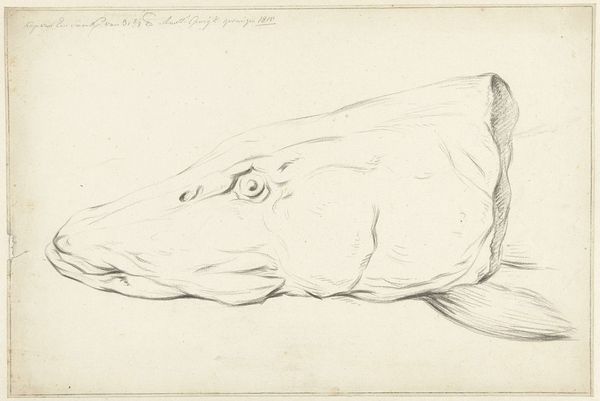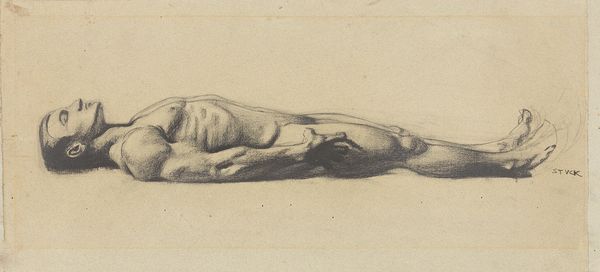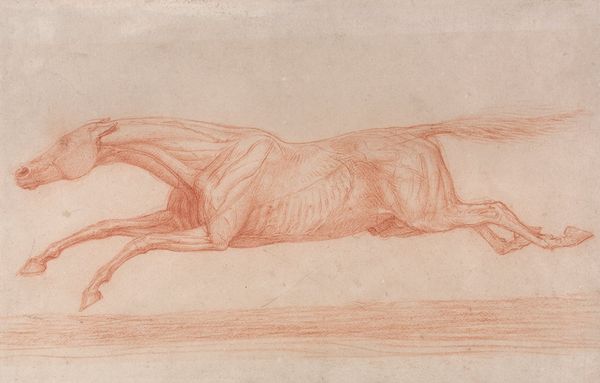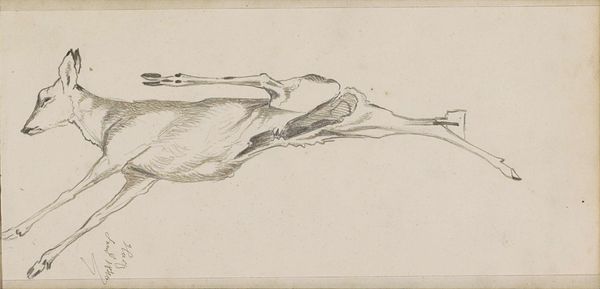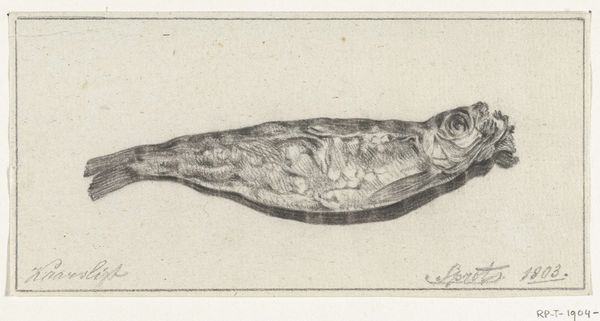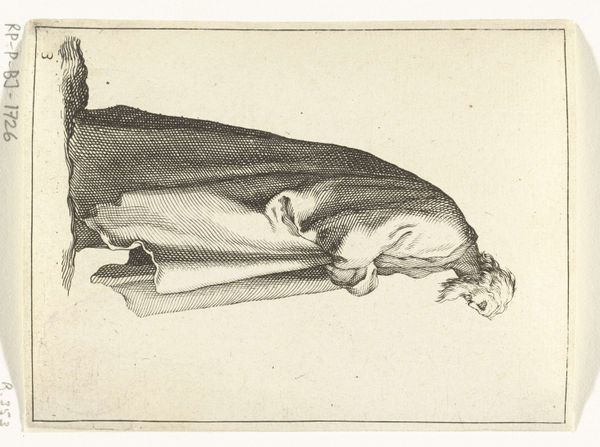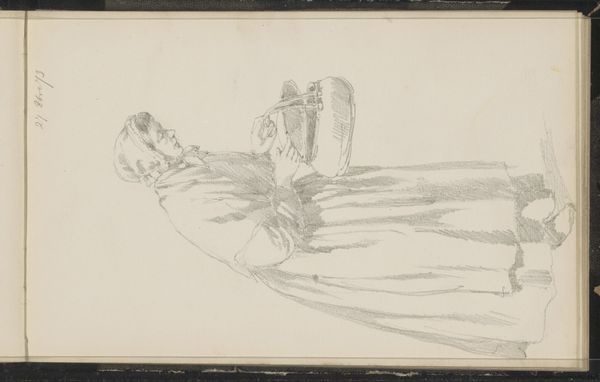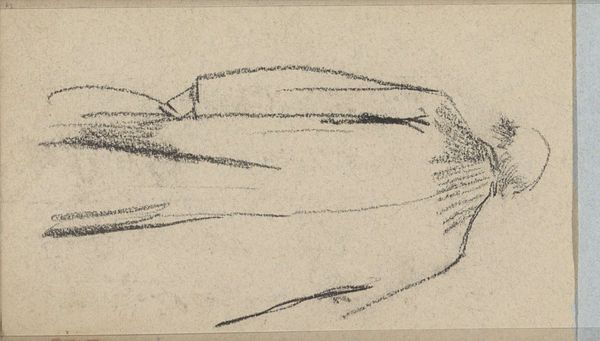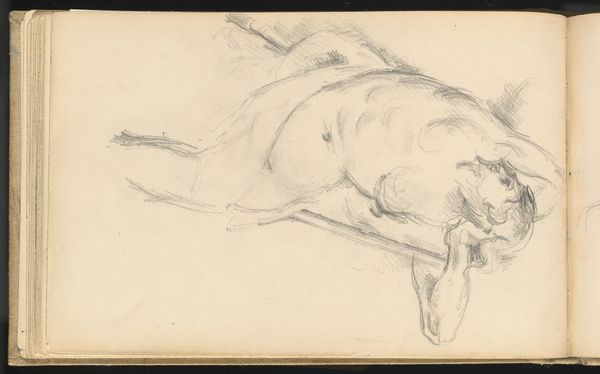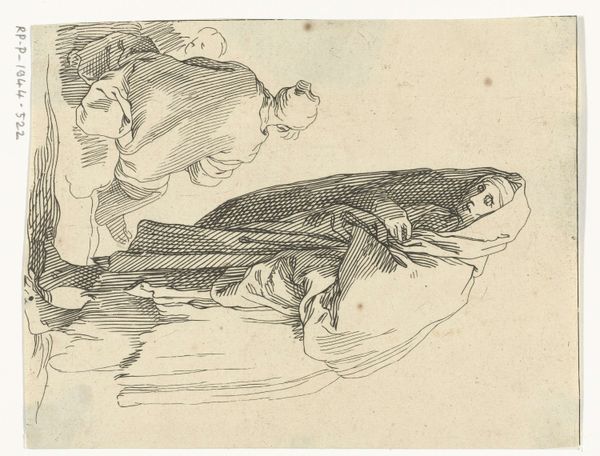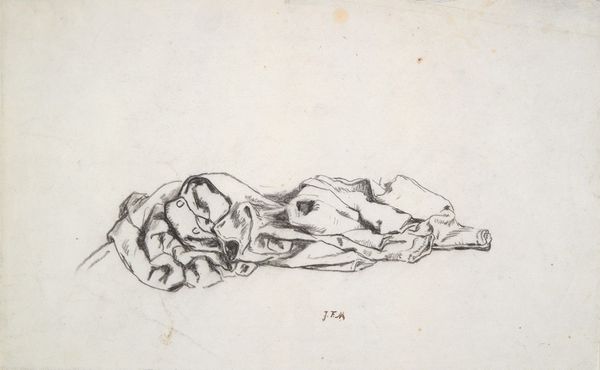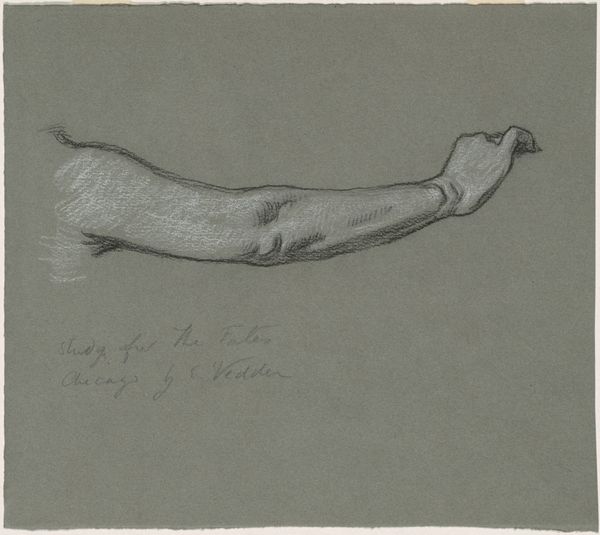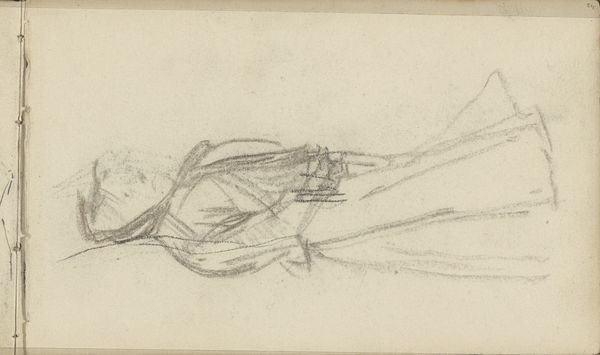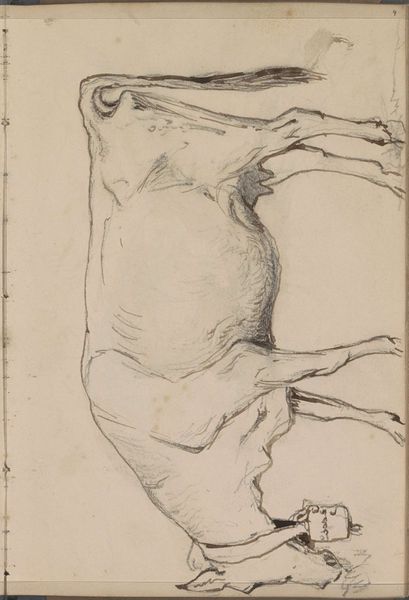
drawing, paper, pencil
#
portrait
#
pencil drawn
#
drawing
#
toned paper
#
pencil sketch
#
figuration
#
paper
#
pencil drawing
#
romanticism
#
pencil
#
academic-art
#
nude
Dimensions: height 84 mm, width 158 mm
Copyright: Rijks Museum: Open Domain
Curator: This drawing, titled "Liggende figuur," meaning "Reclining Figure," is attributed to David-Pierre Giottino Humbert de Superville and dates from sometime between 1780 and 1849. It is rendered in pencil on paper, offering a glimpse into the artist’s academic practice. Editor: My immediate thought? Vulnerability. The figure seems to be giving themself over to… something. Sleep? Maybe even death. There’s a real softness, despite the somewhat rigid lines. Curator: That's an astute observation. The composition directs our gaze from the feet upward along the figure’s body to the face, which appears serene, perhaps even resigned. Note how Humbert de Superville utilizes hatching to model the form, imbuing it with volume and a sense of weight, which serves to humanize the depiction and invite empathetic engagement. This figure recalls countless depictions of figures overcome, a common Romantic trope. Editor: Exactly! And you mentioned academic practice. To me, the beauty lies in the simplicity. It's like Humbert de Superville is laying bare the essence of the human form, with this very humble material. It is rendered with pencil. Do you notice a sense of immediacy? I can almost imagine him capturing the pose in one go. Curator: Precisely. Though economical, it exudes depth. Consider the historical backdrop too. We are standing here at the Rijksmuseum now. But understanding how this artwork reflects shifting cultural ideals about beauty, death, and the body contributes to its continued relevance. It is a potent meditation on fragility, even mortality. Editor: Indeed. I keep circling back to the thought of vulnerability. You get a peek behind the curtain. Art that embraces openness allows for profound reflection and, perhaps most essentially, reminds us of shared experience. It certainly triggers a memory to recall that openness. Curator: I agree. Humbert de Superville invites us to examine how form and emotion can coalesce in such delicate media. Editor: And it gently nudges us toward our shared humanity, reminding us that even in seeming defeat, there can be an incredible beauty.
Comments
No comments
Be the first to comment and join the conversation on the ultimate creative platform.
